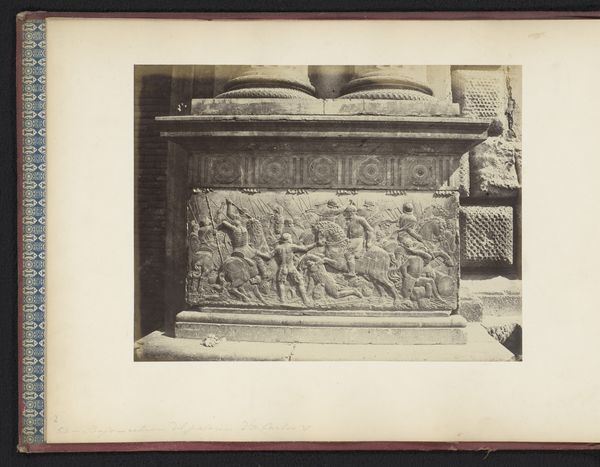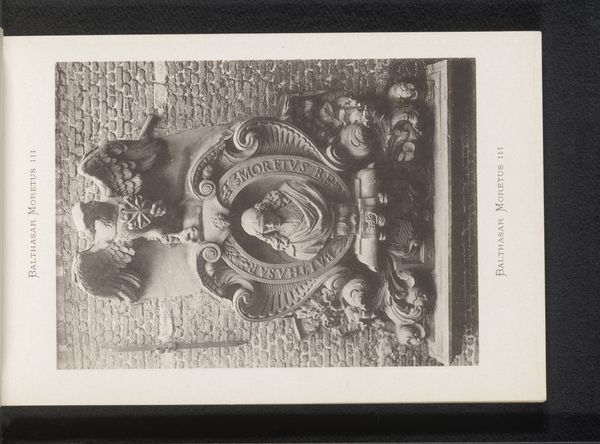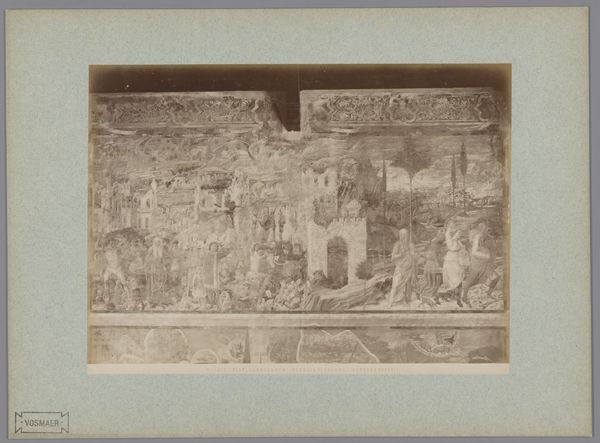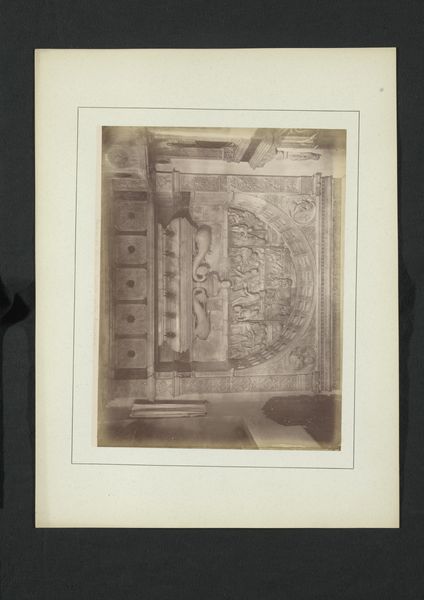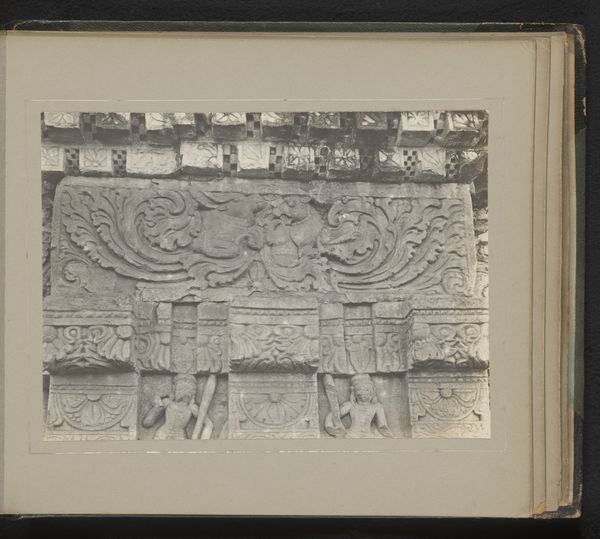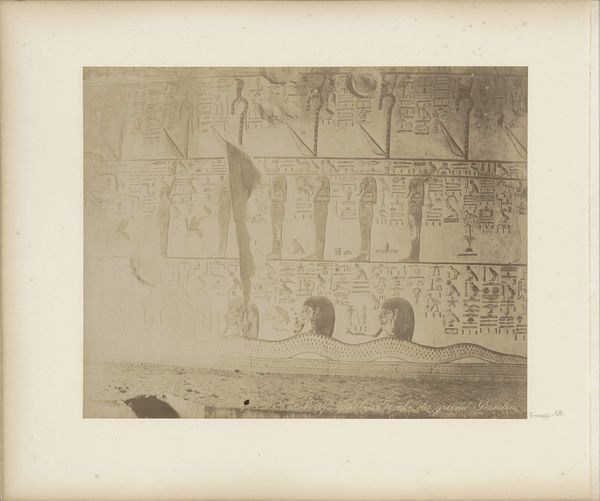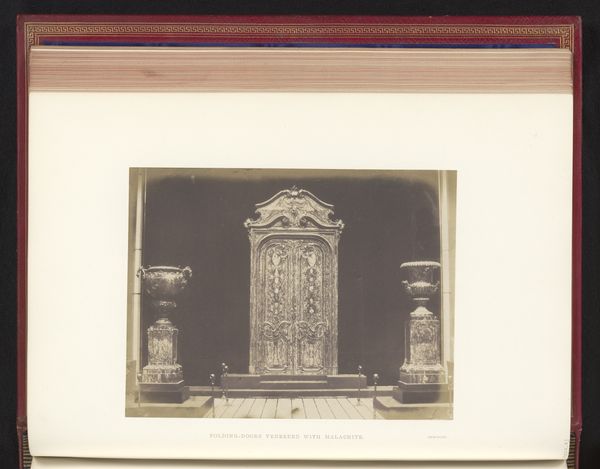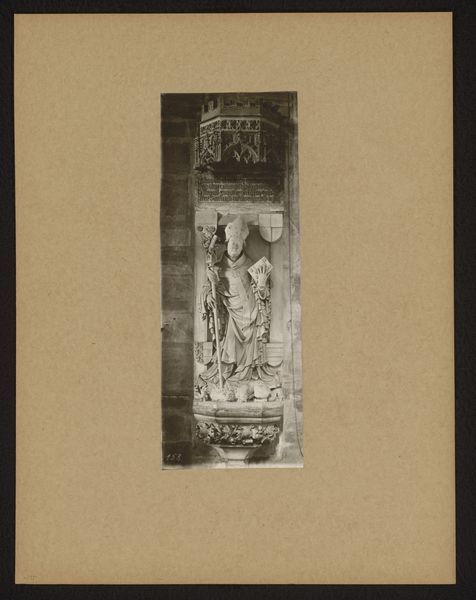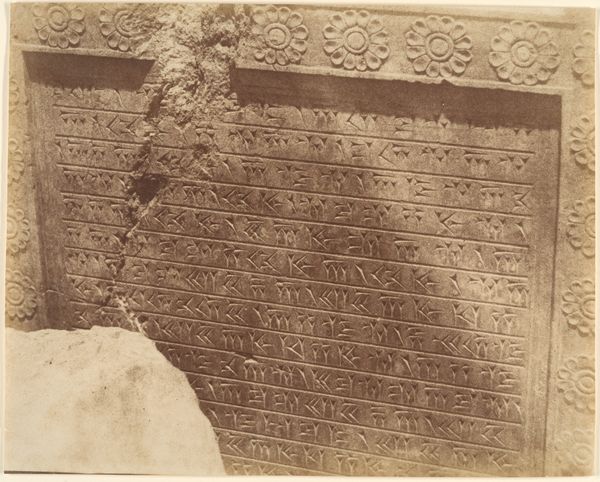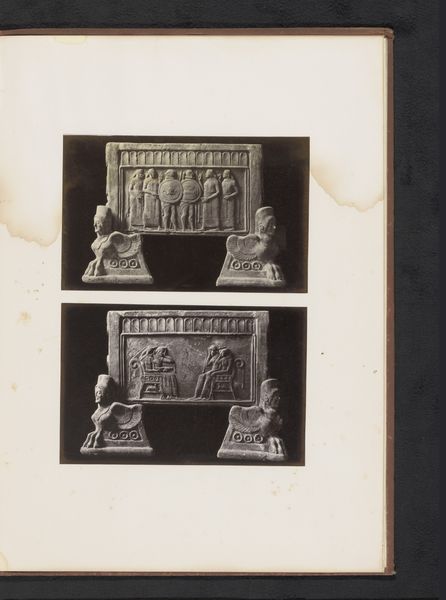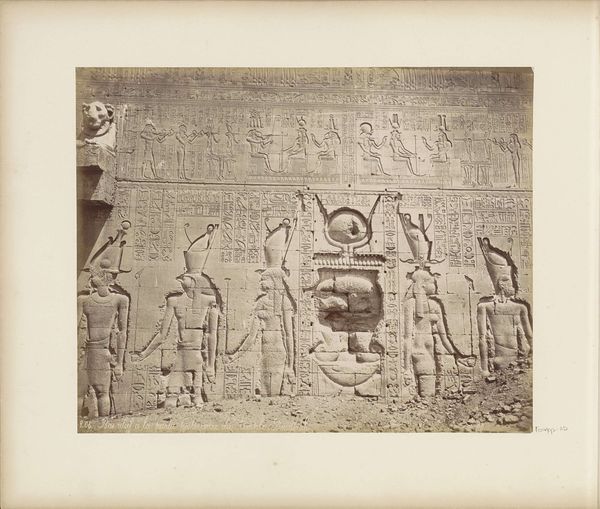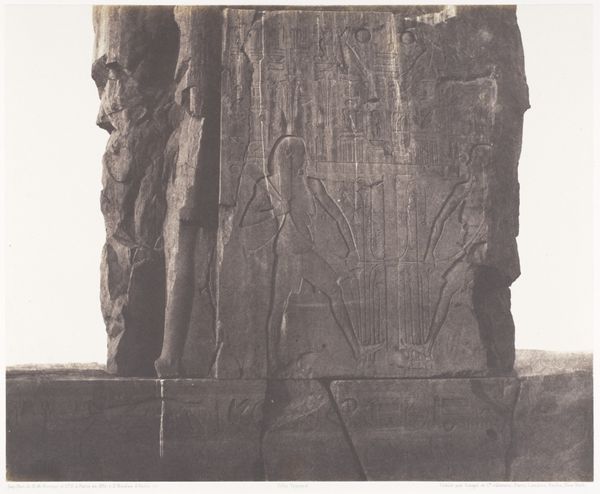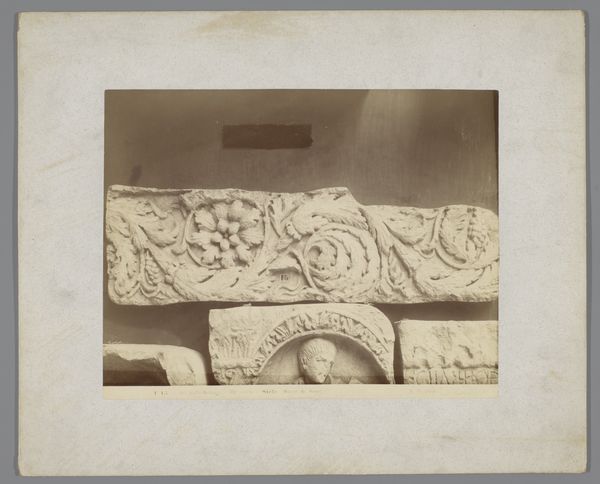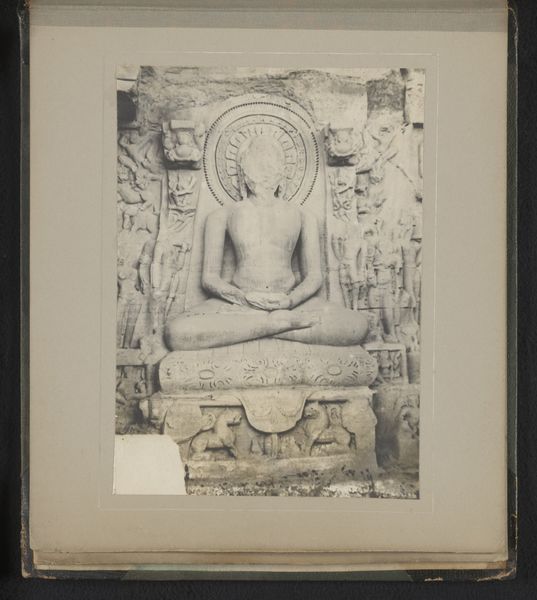
print, relief, photography, gelatin-silver-print
# print
#
asian-art
#
relief
#
landscape
#
photography
#
geometric
#
ancient-mediterranean
#
gelatin-silver-print
Dimensions: height 279 mm, width 196 mm
Copyright: Rijks Museum: Open Domain
Curator: Let's examine "Detail van een stoepa," a gelatin silver print by Donald Mennie, dating from before 1920. My initial impression is one of immense, ornate texture. The high contrast emphasizes the sculptural reliefs, drawing my eye into its complex details. Editor: The image immediately strikes me as a potent symbol of power and hierarchy, almost frozen in time. Considering its Asian cultural context, what narratives of colonialism and cultural appropriation are embedded within this depiction? Curator: Interesting perspective. Focusing purely on form, the photograph expertly captures the interplay of light and shadow across the carved surfaces, showcasing geometric and organic motifs in dialogue. The staccato rhythm established by the evenly spaced structural features contributes a subtle but engaging optical device for the eye. Editor: I agree. It's undeniable how the photographer highlights form, yet the socio-political dimension cannot be overlooked. Stupas serve as important locations of pilgrimage and symbols of the historical Buddha's enlightenment, and so it feels crucial to discuss Mennie's potential orientalist gaze and how he framed this detail for a Western audience. Whose story are we truly seeing? Curator: By isolating this segment and reducing it to grayscale, Mennie compels the viewer to examine closely the architectural design and the detailed carvings, essentially abstracting its cultural purpose. It's about aesthetic experience and compositional elements first, before it’s anything else. Editor: But shouldn’t our aesthetic experiences invite interrogation? Shouldn't we consider the colonial infrastructure that permitted its capture, and, furthermore, the historical circumstances around the cultural value assigned to it by external viewers versus its internal ritualistic significance? The very act of selecting "detail" suggests fragmentation and appropriation. Curator: A valid point. I appreciate how you position this piece within its broader historical narrative, acknowledging its potential complexities and ethical implications. It really emphasizes that any work of art must be engaged with from as many viewing angles as possible. Editor: Exactly. Ultimately, by considering both form and historical context, we hopefully inspire deeper understanding and critical thought.
Comments
No comments
Be the first to comment and join the conversation on the ultimate creative platform.
